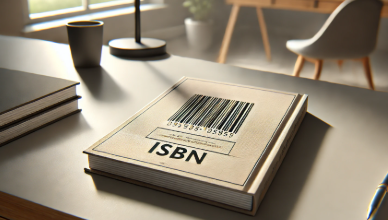In the intricate tapestry of the book publishing industry, the journey from a finished manuscript to a published book is both exhilarating and daunting. This odyssey traverses a landscape rich in tradition, innovation, and the collective dreams of writers aiming to share their stories with the world. Understanding this landscape is not just about navigating the complexities of the publishing process; it’s about aligning one’s creative aspirations with the realities of a fiercely competitive industry.
The publishing landscape is a dynamic realm where traditional publishing houses, literary agents, and the burgeoning field of self-publishing play pivotal roles. Traditional publishing remains the bastion of literary recognition, offering authors the prestige of being associated with esteemed imprints and comprehensive support in editing, design, marketing, and distribution. This path often involves partnering with a literary agent, a key player who acts as the author’s advocate, negotiating contracts, and guiding careers with strategic acumen. Agents are discerning gatekeepers, seeking manuscripts that not only resonate with them personally but also have the potential to thrive in the market.
On the other side of the spectrum is self-publishing, a domain that has democratized the act of publishing, empowering authors with direct control over every aspect of their book’s journey. This route demands a blend of creativity, business savvy, and marketing prowess, as authors take on roles traditionally handled by publishers. The rise of digital platforms and print-on-demand technology has significantly lowered the barriers to entry, making self-publishing a viable option for many.
Between these poles are independent publishers and digital-only imprints, offering diverse and often niche opportunities for authors. These entities vary widely in their approach, from highly specialized firms focusing on specific genres to hybrid models that blend traditional and self-publishing elements.
For aspiring authors, understanding the nuances of this landscape is crucial. It involves not just the craft of writing but also a grasp of industry standards, submission guidelines, and the strategic considerations behind choosing a publishing route. Whether aiming for the traditional prestige of established publishing houses, the tailored approach of independent publishers, or the entrepreneurial spirit of self-publishing, authors must navigate this landscape with both their creative and practical hats firmly in place.
This article seeks to illuminate the path from a finished manuscript book to a published book, unraveling the complexities of the publishing industry and shedding light on the roles of its key players. It’s a guide through the labyrinth of literary dreams, offering insights and strategies for authors ready to embark on their publishing journey so you can send your finished book to publishers.
Your Publishing Journey Awaits – Start NowPreparing Your Manuscript for Submission
Before an author can embark on the journey of submitting their manuscript to publishers or agents, a crucial phase of preparation is needed to polish the text to its brightest shine. This process involves not just the solitary act of writing and revising but also engaging with professionals and peers who can provide invaluable feedback and insights. Ensuring that your manuscript resonates with your target audience and adheres to genre norms is essential, as is the meticulous task of finalizing word count and verifying the completeness of your work.
The Role of Professional Editors and Critique Groups
Professional editors are the unsung heroes of the publishing world, possessing the keen ability to dissect a manuscript, identifying both its strengths and areas in need of improvement. Hiring a professional editor can significantly enhance the quality of your manuscript, focusing on various aspects such as structural coherence, character development, pacing, and grammatical precision. These experts bring an objective eye to your work, highlighting inconsistencies and suggesting improvements that might elude even the most diligent authors.
Critique groups offer a different, yet equally valuable, form of feedback. Comprising fellow writers, these groups provide a supportive environment where members can share their work and receive constructive criticism. The collaborative nature of critique groups allows for a diversity of perspectives, fostering a culture of learning and mutual improvement. This peer-to-peer review process can uncover insights that propel a manuscript from good to exceptional.
Understanding Your Target Audience and Genre Norms
A profound understanding of your target audience and the conventions of your chosen genre is fundamental in crafting a manuscript that resonates and sells. Each genre, be it literary fiction, science fiction, genre fiction, or narrative nonfiction itself, comes with its own set of expectations and norms that readers anticipate. Literary fiction might prioritize depth of character and lyrical prose, while science fiction could demand rigorous world-building and innovative technological concepts. Nonfiction authors need to establish credibility and engage readers with compelling narratives or arguments.
Tailoring your manuscript to meet these expectations without compromising your creative vision is a delicate balance. It involves researching successful books within your genre, understanding the demographic characteristics of your target audience, and weaving these elements into your writing to enhance its appeal and relevance.
Importance of Beta Readers and Feedback
Beta readers play a pivotal role in the manuscript preparation phase. Typically drawn from a pool of trusted friends, avid readers, or members of your writing community, beta readers provide early feedback on your completed draft. Unlike professional editors, beta readers approach your manuscript from a reader’s perspective, offering insights into the overall reading experience, emotional engagement, plot clarity, and believability of characters.
This feedback is invaluable for identifying blind spots in your narrative and gauging the manuscript’s impact on potential readers. Constructive criticism from beta readers can guide significant revisions, ensuring your story aligns closely with reader expectations and market demands.
Finalizing Word Count and Ensuring Manuscript Completeness
Adhering to industry-standard word counts is more than a matter of compliance; it reflects an understanding of market norms and reader expectations. While there is some flexibility, straying too far from these benchmarks can signal to agents and publishers that an author may not be aware of genre conventions or lacks the ability to edit their work effectively.
Finalizing your manuscript also involves ensuring that every chapter, scene, and sentence serves the narrative, contributing to the development of characters, plot, and theme. Completeness isn’t just about reaching a word count; it’s about achieving narrative satisfaction, ensuring that your story is fully told and that every thread is neatly tied by the end, leaving your readers with a sense of closure and fulfillment.
In summary, preparing your manuscript for submission is a multifaceted process that involves professional editing, engaging with critique groups, understanding your audience and genre, incorporating feedback from beta readers, and meticulously checking that your manuscript is both complete and within the expected word count range. Each of these steps is crucial in transforming your manuscript into a polished work ready for the critical eyes of agents and publishers.
Literary Agents: Gatekeepers to Traditional Publishing
In the traditional publishing ecosystem, literary agents are often seen as the gatekeepers, bridging the gap between authors and publishing houses. Their role is pivotal in navigating the complex terrain of book deals, rights negotiations, and the editorial process, making them indispensable allies for most writers aiming to see their works on bookstore shelves.
Your Publishing Journey Awaits – Start NowWhat Literary Agents Do and Why They’re Crucial for Most Writers?
Literary agents are much more than mere middlemen in the publishing process. They are advocates for authors, championing their works to the right editors and publishing houses. Agents bring a wealth of industry knowledge and contacts, which can be invaluable for writers, especially those new to the publishing world. They understand market trends, know what publishers are looking for, and have insights into which editorial teams might be the best fit for a particular manuscript.
Agents also handle the business side of writing, from negotiating contracts to ensuring that royalty payments are fair and timely. They work on commission, typically earning 10-15% of an author’s earnings from book sales, which means their motivation to secure the best possible deal aligns with the interests of the authors they represent.
How to Find the Right Agent for Your Genre
Finding an agent who is well-suited to your genre is crucial. Agents specialize in certain areas, and their expertise and industry connections often align with specific types of books, such as women’s fiction, young adult, or creative nonfiction. Researching agents who have successfully represented books similar to yours is a good starting point. Resources like the Writers’ and Artists’ Yearbook, literary agent directories, and industry publications can provide comprehensive lists of agents, including details about their preferences and submission guidelines.
Attending literary festivals, workshops, and conferences can also offer opportunities to meet agents and learn more about their specific interests. Many agents participate in pitch sessions or panels at these events, providing insights into what they are currently seeking.
Crafting a Great Query Letter and Synopsis
Your query letter is your first introduction to an agent, and making a strong impression is vital. This one-page letter should succinctly articulate what your book is about, why it’s unique, and why you are the best person to write it. It’s important to personalize each query, addressing the agent by name and mentioning why you think they would be the right fit for your work, perhaps referencing books they have represented that resonate with your own.
A compelling query letter is clear, engaging, and professional. It introduces your main characters, the central conflict of your story, and what’s at stake. It also includes a brief author bio, highlighting relevant writing experience, awards, or publications.
Alongside the query letter, a synopsis provides a clear overview of your book’s plot, including key characters, major plot points, and the narrative arc. While revealing the ending might seem counterintuitive, agents and publishers look for a complete understanding of your story to assess its marketability and how well it’s constructed.
Submission Guidelines: What Agents Expect in Your Submission Package
Adhering to an agent’s submission guidelines is crucial when sending out your query letter and synopsis. These guidelines vary from agent to agent but generally include specifics about the format, length, and content of your submission. Most agents request a query letter, a synopsis, and the first few chapters of your manuscript. Ensuring that these elements are well-prepared and polished can significantly impact your chances of capturing an agent’s interest.
Before submitting, carefully review each agent’s own submission guidelines on their website or in their directory listing. Some may prefer submissions via email, while others might use an online submission form. Paying attention to details like font size, document format, and whether to include the synopsis in the body of the email or as an attachment can demonstrate your professionalism and respect for their preferences.
In conclusion, literary agents are instrumental in the traditional publishing process, offering expertise, advocacy, and access to key industry contacts. Finding the right agent for your genre, crafting a compelling query letter and synopsis, and adhering to submission guidelines are essential steps in securing representation. With the right agent by your side, the path to seeing your book in print becomes clearer and more navigable, bringing you one step closer to your publishing aspirations.
Navigating the Publishing Houses Landscape
The publishing houses landscape is a mosaic of large conglomerates, mid-size companies, and small independent publishers, each playing a distinct role in the broader ecosystem of book publishing. Understanding the nuances between these entities and their operational dynamics is crucial for authors aspiring to navigate the traditional publishing route successfully.
Differences Between Large Publishers and Independent Publishers
Large publishers, such as Penguin Random House, HarperCollins, and Simon & Schuster, are often part of global media conglomerates. They have extensive distribution networks, significant marketing resources, and the ability to place books in prominent retail locations. These publishers tend to attract bestselling and debut authors with high commercial potential, offering advances against royalties, extensive editorial support, and robust marketing campaigns. However, the scale at which most publishers say they operate can sometimes mean a less personalized approach to author relationships and a highly competitive selection process.
In contrast, to traditional publishers, independent publishers, often referred to as “indies,” vary greatly in size and scope but generally offer a more niche-focused and personalized publishing experience. They may specialize in specific genres like literary fiction, poetry, or niche nonfiction, providing a platform for voices and topics that might not find a home within the larger houses. Indies are known for their agility, innovative approaches, and close-knit author-publisher relationships. While they may not offer the same level of advancement or have as extensive a distribution network as the big publishers, their books often receive more individual attention, and they can take risks on unconventional projects.
The Role of Publishing Houses in the Traditional Publishing Route
Publishing houses are the engines of the traditional publishing route, responsible for turning manuscripts into finished books and getting them into the hands of readers. Their role encompasses editorial development, where manuscripts are refined and polished; design, which includes cover art and layout; production, the actual printing and manufacturing of the book; and marketing and sales, which covers everything from promotional activities to distribution.
A publishing house’s editorial team is instrumental in shaping the final product. Editors work closely with authors to hone their manuscripts, ensuring clarity, coherence, and engagement for the target audience. The marketing and sales teams develop strategies to maximize the book’s visibility and appeal, including promotional materials, media outreach, and placement in bookstores and online platforms.
Understanding Submission Guidelines and Direct Submissions
Most large publishing houses do not accept unsolicited manuscripts, meaning they require submissions to come through literary agents. This policy helps publishing companies manage the volume of submissions and ensures that manuscripts have been vetted and deemed market-ready by industry professionals. Submission guidelines for each publishing house detail the process for submitting a manuscript, including the format, length, and what materials should be included, such as a query letter, synopsis, and sample chapters.
For authors, adhering to these guidelines is paramount. Failure to do so can result in automatic rejection, regardless of the manuscript’s quality. It’s essential to research each publisher’s requirements carefully, often available on their website, and tailor submissions accordingly.
How to Get Noticed by Big Publishing Houses
Getting noticed by big publishing houses involves more than just writing a great book; it’s about understanding the market, building a platform, and making strategic connections. Authors can increase their visibility by actively engaging in the writing community and participating in literary events, workshops, and conferences where they can network with agents and publishers. Winning writing contests, publishing short stories or articles in reputable magazines, and maintaining an active and professional online presence can also attract attention.
A strong author platform can significantly enhance an author’s appeal to large publishers. This includes having an engaged following on social media, a professional website, and possibly a blog where you share insights about your writing process, topics of interest, and other content that resonates with your target audience. Building a platform demonstrates to publishers that you’re not just a talented writer but also someone with the potential to reach and engage readers directly.
Navigating the publishing house landscape requires a blend of creativity, persistence, and strategic thinking. Understanding the differences between large and independent publishers, adhering to submission guidelines, and actively working to increase your visibility can improve your chances of success in the traditional publishing route.
Your Publishing Journey Awaits – Start NowThe Role of Writing Conferences and Networking
Writing conferences serve as vital hubs for creativity, education, and networking within the literary world. These gatherings bring together a diverse array of industry professionals, including agents, publishers, and writers of all levels, offering a unique opportunity for aspiring authors to immerse themselves in the community, learn from experts, and make connections that can be pivotal in their publishing journey.
Networking with Agents, Publishers, and Other Writers
One of the primary benefits of attending writing conferences is the opportunity to network. These events often feature a mix of panels, workshops, and social gatherings, providing a variety of settings in which to meet and interact with industry professionals. Networking with agents and publishers at these events can demystify the submission process, offering insights into what these gatekeepers are actively seeking and how best to approach them with your work.
Equally important is the opportunity to connect with fellow writers. These peers can become part of your support network, offering feedback on your work, sharing their experiences, and potentially collaborating in the future. The relationships forged at conferences can lead to writing groups, beta reader exchanges, and lifelong friendships, all of which are invaluable to a writer’s development and success.
Pitch Sessions and How to Prepare for Them
Many writing conferences offer pitch sessions, where authors are given a short, designated time to present their book idea directly to an agent or publisher. These sessions can be a golden opportunity but also intimidating for those unaccustomed to pitching their work in such a condensed format.
Preparation is key to making the most of these sessions. This involves crafting a succinct and compelling pitch that not only covers the essence of your book—its characters, plot, and unique selling points—but also why it’s a good fit for the market and the agent or publisher you’re addressing. Practice your pitch to ensure it fits within the allotted time, usually around three to five minutes, and anticipate follow-up questions.
Benefits of Attending Writing Conferences for Aspiring Authors
Writing conferences offer myriad benefits beyond networking and pitch opportunities. They are rich educational resources, featuring workshops, seminars, and panels that cover various aspects of writing, publishing, and marketing. Learning from successful authors and industry professionals can provide valuable insights into the craft and business of writing, helping you to avoid common pitfalls and enhance your understanding of the industry.
Additionally, conferences can be profoundly inspiring. Being surrounded by people who share your passion for storytelling can reignite your motivation and drive to write. They offer a sense of community and belonging that can be particularly energizing for writers, who often spend long periods working in isolation.
Finally, attending writing conferences can significantly enhance your professional profile. Participation demonstrates a serious commitment to your craft and career, signaling to industry professionals that you are proactive in pursuing your publishing goals. This professional development aspect can make you more attractive to agents and publishers, setting you apart from other aspiring authors.
In essence, writing conferences are invaluable for aspiring authors, offering unparalleled opportunities to learn, network, and advance their careers. By preparing effectively and engaging fully in the experience, writers can leverage these gatherings to make significant strides toward their publishing aspirations.
Alternatives to Traditional Publishing
In the evolving landscape of the book industry, authors are no longer confined to the traditional publishing route. The rise of self-publishing, digital-only publishers, and the resurgence of independent and university presses have democratized the process of publishing books, offering a plethora of alternatives for authors seeking to share their stories with the world.
Overview of Self-Publishing and Digital-Only Publishers
Self-publishing has emerged as a formidable option, enabling authors to take complete control of the publishing process. This route allows for direct engagement with readers, full rights retention, and potentially higher royalties compared to traditional publishing. Platforms like Spines, Amazon’s Kindle Direct Publishing, and Smashwords have simplified the process, providing tools for digital publishing, distribution, and even print options.
Parallel to self-publishing are digital-only publishers, entities that operate similarly to traditional publishers but focus exclusively on the e-book and sometimes audiobook markets. These publishers often cater to niche genres and emerging trends, offering professional services like editing, cover design, and marketing, albeit with a digital-first approach. For authors, this can mean faster publication times and access to audiences predominantly consuming digital content.
Publishing With Spines
In the evolving landscape of publishing alternatives, Spines stands out as a revolutionary platform that simplifies the journey from manuscript to published book. Spines offers a suite of services designed to make publishing accessible, fast, and affordable, catering to both emerging and established authors.
Why Publishing with Spines is Easy:
- Speed: Spines has streamlined the publishing process, enabling authors to see their work published in less than 30 days. This rapid turnaround is a game-changer, especially for authors eager to share their stories without the lengthy timelines often associated with traditional publishing.
- Affordability: Leveraging AI-driven efficiencies in production, Spines offers comprehensive plans that are budget-friendly and significantly lower than industry standards. This makes professional publishing services accessible to a wider range of authors.
- Dedicated Support: Each author is paired with a personal production manager, ensuring a smooth and personalized publishing journey. This dedicated support is invaluable for navigating the publishing process with ease and confidence.
- All Formats AI-Generated: Spines provides AI-generated Print-on-Demand, eBooks, and Audiobooks, ensuring authors can reach their audience in whichever format they prefer. This comprehensive approach maximizes the book’s accessibility and audience reach.
- Global Distribution: With Spines, your book will find its way across 100+ global channels, including major retailers like Amazon and Barnes & Noble. This extensive distribution network amplifies the book’s visibility and potential for success.
Spines distinguishes itself in the publishing industry by offering a unique blend of services tailored to ensure author satisfaction and success. With a steadfast commitment to quality, Spines instills confidence in authors through a 7-day money-back guarantee, underscoring their dedication to delivering satisfaction and peace of mind. The platform is designed with a user-friendly dashboard that simplifies the publishing process, making services such as proofreading, editing, formatting, and cover design accessible and straightforward, even for those with minimal tech experience. This approach consolidates all publishing needs into a single, efficient platform.
Moreover, Spines champions inclusivity by welcoming authors at every stage of their writing journey. Whether embarking on a first writing endeavor or possessing an established writing career, authors find Spines to be a supportive and adaptable partner, committed to facilitating publishing success for a diverse range of voices and stories.
Choosing Spines for your publishing needs means embracing a future where publishing is not just an exclusive club but an accessible dream for all storytellers. With its innovative approach, comprehensive services, and commitment to author success, Spines is redefining what it means to bring stories to life in the digital age. Sign up for free to begin the process.
Your Publishing Journey Awaits – Start NowThe Rise of Print-on-Demand Technology and Its Impact
Print-on-demand (POD) technology has revolutionized self-publishing by eliminating the need for large upfront print runs and reducing the financial risks associated with unsold inventory. Platforms like IngramSpark and Amazon’s CreateSpace enable authors to offer physical books that are printed only when an order is placed, ensuring that books are always available without the need for storage space.
This technology has made self-publishing more accessible and sustainable, encouraging a broader spectrum of authors to self-publish their work. It also allows for greater flexibility in updating content, experimenting with different formats, and scaling distribution in response to demand.
How Independent and University Presses Offer Unique Opportunities
Independent presses, often more agile and risk-tolerant than their larger counterparts, provide a haven for diverse voices, experimental formats, and niche subjects. They are known for their personalized attention to authors and their works, fostering closer author-publisher relationships. Independent presses can be particularly appealing for authors whose works fall outside mainstream commercial interests but possess significant cultural, literary, or niche market value.
University presses, typically affiliated with academic institutions, stand out for their commitment to scholarly, educational, and regional literature. They are esteemed for their rigorous peer review processes, contributing to the credibility and prestige of published works. For authors in academic fields or those writing extensively researched nonfiction, university presses offer a respected platform for publication.
Pros and Cons of Self-Publishing vs. Traditional Publishing
Choosing between self-publishing and traditional publishing involves weighing the pros and cons of each route. Self-publishing offers autonomy, quicker time to market, and higher royalty rates. However, it requires authors to either possess or outsource skills in editing, design, and marketing, often necessitating upfront investment without the guarantee of sales.
Traditional publishing, on the other hand, provides expert editorial, design, and marketing support, along with distribution channels that can be challenging for self-published authors to access. The prestige associated with being traditionally published by a recognized publishing house can also enhance an author’s reputation. However, this route typically involves a slower time to market, less creative control, and the challenge of securing a publishing deal in a competitive environment.
In summary, the choice between self-publishing, partnering with a digital-only or independent press, or pursuing traditional publishing depends on the author’s goals, resources, and the specific demands of their work. Each route offers distinct advantages and challenges, and understanding these can help authors make informed decisions about how best to bring their stories to their intended audiences.
Securing a Publishing Deal
Navigating the path from manuscript submission to securing a publishing deal is an intricate process filled with anticipation, learning, and strategic decision-making. This journey, while unique for every author, involves several key stages and considerations, from understanding the nuances of publishing contracts to recognizing the critical role of an author platform in today’s digital age.
The Journey from Submission to Publishing Deal: What to Expect
The journey begins with the submission of your manuscript, typically through a literary agent who pitches your work to suitable publishing houses. This initial phase can be prolonged, often involving multiple rounds of submissions and a waiting period that can span several months. During this time, publishers review your manuscript to determine its fit with their list, market potential, and alignment with current trends.
Receiving an offer is a moment of validation, but it’s also the start of a new phase: negotiation. Publishers will present a contract outlining the terms of your deal, including royalties, advance payments, rights, and obligations. It’s crucial to approach this stage with diligence and, where possible, the guidance of a literary agent or legal advisor experienced in publishing contracts.
Understanding the Publishing Contract and Negotiation Tips
A publishing contract can be complex, and it’s essential to understand its terms fully. Key areas to focus on include the royalty rates, which dictate your earnings from book sales, and the advance against royalties, an upfront payment credited against future earnings. Rights are another critical component, including which geographical territories and formats (e.g., print, digital, audio) the publisher can produce and sell your book in.
Negotiation is an integral part of finalizing a publishing deal. Consider aspects like the length of the contract term, rights reversion clauses, and sub-rights, such as film or foreign language editions. It’s also worth discussing the publisher’s commitment to marketing and the level of input you’ll have in decisions like cover design and promotional activities. Remember, negotiation is not just about improving financial terms but also about ensuring that the partnership aligns with your goals and vision for your book.
The Importance of an Author Platform and Social Media Presence
In today’s publishing landscape, an author’s platform plays a significant role in securing a deal and the book’s subsequent success. A robust platform demonstrates to publishers that you have a ready audience and the ability to engage with readers and promote your work effectively. Elements of a strong platform include an active social media presence, a professional website, a mailing list, and regular participation in relevant online and offline communities.
Social media, in particular, offers a direct channel to connect with readers, build relationships, and share content that resonates with your target audience. Platforms like Twitter, Instagram, and Facebook can be powerful tools for building visibility, especially when used to share insights into your writing process, themes relevant to your book, and personal interests that align with your readers’ values.
What Happens After Signing a Publishing Deal: The Road to Bookstore Shelves
Signing a publishing deal is a significant milestone, but the work doesn’t stop there. The post-signing phase involves collaboration with your publisher on various fronts, from finalizing your manuscript through the editorial process to planning and executing marketing and promotional strategies.
The editorial process can be extensive, involving structural edits, copyediting, and proofreading to ensure the manuscript is polished and ready for publication. Meanwhile, the marketing team will start crafting a strategy to maximize your book’s reach and impact, which may include setting up author events, securing media coverage, and coordinating with sales teams to ensure broad distribution.
As the publication date approaches, you’ll likely be involved in promotional activities, which could range from social media campaigns to author readings and signings. This period is crucial for drumming up interest and excitement for your book, leveraging both the publisher’s resources and your platform to reach potential readers.
Finally, seeing your book on bookstore shelves is a moment of immense pride and joy, marking the culmination of a journey from manuscript to published work. However, the journey doesn’t end there; post-publication, the focus shifts to sustaining momentum through continued marketing efforts, reader engagement, and, for many authors, starting the process anew with their next writing project.
Securing a publishing deal is a comprehensive process that extends well beyond the initial contract signing. It encompasses a deep understanding of contractual terms, the strategic use of an author platform, and active participation in the publication and promotion of your book. With the right approach and mindset, this journey can be a rewarding experience that leads to both personal and professional growth as an author.
Your Publishing Journey Awaits – Start NowNavigating the Future: Embracing the Publishing Journey
In the labyrinth of book publishing, where the paths of creativity and commerce intertwine, persistence and knowledge emerge as the guiding lights for authors navigating this complex terrain. The journey from a nascent manuscript to a published book is fraught with challenges and uncertainties, yet it is also ripe with opportunities for growth, learning, and ultimately, the joy of sharing your stories with the world.
The publishing industry, with its myriad routes and evolving dynamics, demands not just talent but tenacity and a willingness to learn. Understanding the intricacies of this industry—from crafting compelling query letters to negotiating publishing contracts, and from building an engaging author platform to choosing the right publishing route—is paramount. This knowledge empowers authors to make informed decisions, tailor their strategies to their unique goals, and navigate the publishing landscape with confidence.
Choosing the right publishing route is a decision that should align with your personal goals, the nature of your work, and your aspirations for your writing career. Whether it’s the traditional prestige of established publishing houses, the tailored approach of independent presses, the entrepreneurial spirit of self-publishing, or the innovative platforms like Spines, each path offers distinct advantages and challenges. Reflect on what success means to you, whether it’s reaching a wide audience, retaining creative control, or achieving critical acclaim, and let this vision guide your choice.
In an industry as dynamic as publishing, staying informed is not optional; it’s essential. The landscape is continually shaped by technological advancements, market trends, and shifting reader preferences. Engage with writer communities, attend industry events, subscribe to relevant publications, and never stop learning from the successes and setbacks of fellow authors.
As you embark on or continue your publishing journey, let persistence be your constant companion. Rejections, setbacks, and obstacles are part and parcel of this journey, but they are also stepping stones towards your goal. Embrace them as opportunities to refine your craft, strengthen your resolve, and inch closer to realizing your publishing dreams.
In conclusion, the publishing journey is as much about the destination as it is about the journey itself. It is a testament to the power of storytelling, the resilience of creators, and the transformative potential of sharing one’s voice with the world. Armed with persistence, knowledge, and a clear vision of your goals, the path from manuscript to published book is not just navigable but can be a fulfilling adventure in its own right.








